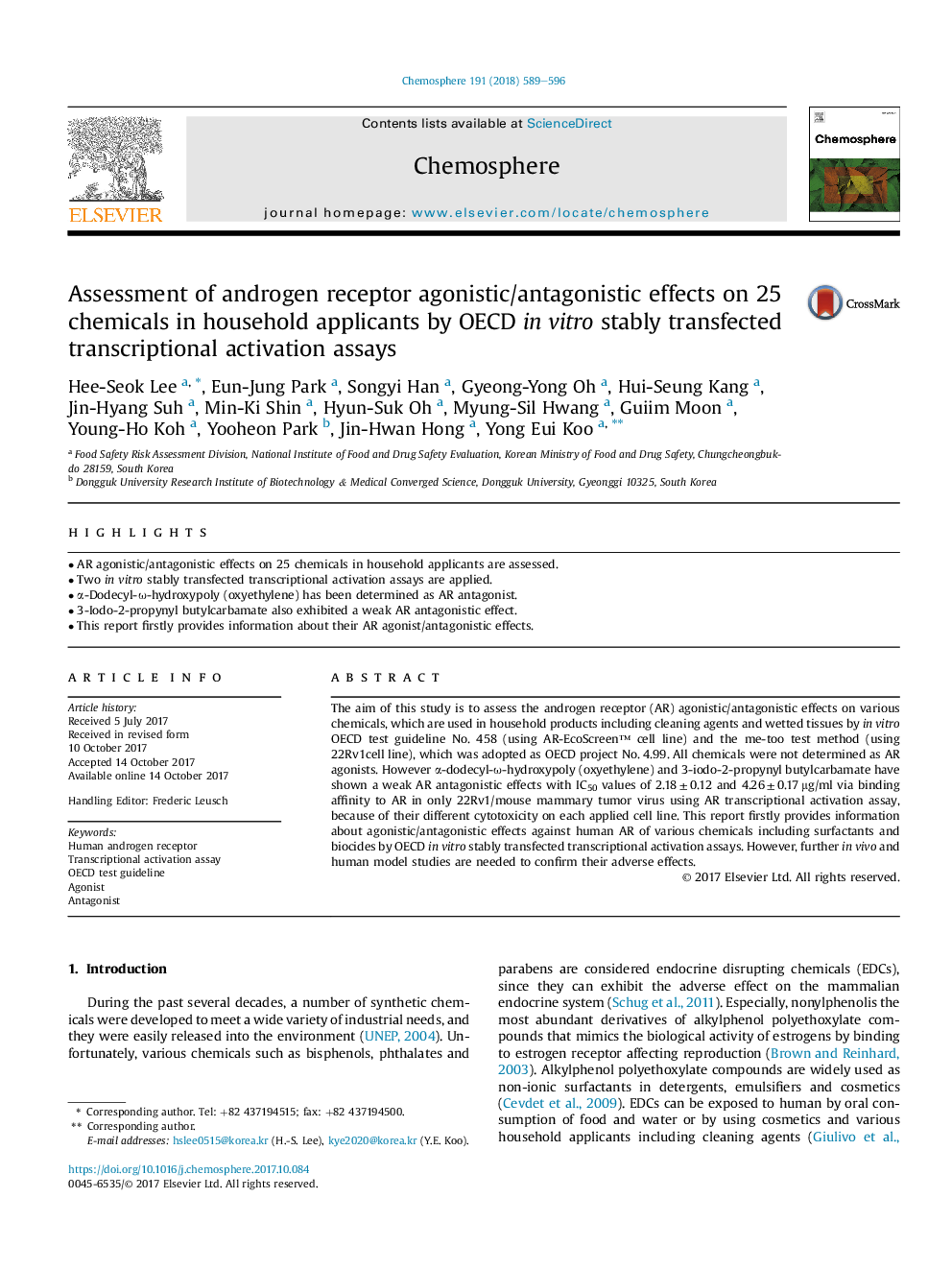| Article ID | Journal | Published Year | Pages | File Type |
|---|---|---|---|---|
| 8852870 | Chemosphere | 2018 | 8 Pages |
Abstract
The aim of this study is to assess the androgen receptor (AR) agonistic/antagonistic effects on various chemicals, which are used in household products including cleaning agents and wetted tissues by in vitro OECD test guideline No. 458 (using AR-EcoScreen⢠cell line) and the me-too test method (using 22Rv1cell line), which was adopted as OECD project No. 4.99. All chemicals were not determined as AR agonists. However α-dodecyl-Ï-hydroxypoly (oxyethylene) and 3-iodo-2-propynyl butylcarbamate have shown a weak AR antagonistic effects with IC50 values of 2.18â¯Â±â¯0.12 and 4.26â¯Â±â¯0.17â¯Î¼g/ml via binding affinity to AR in only 22Rv1/mouse mammary tumor virus using AR transcriptional activation assay, because of their different cytotoxicity on each applied cell line. This report firstly provides information about agonistic/antagonistic effects against human AR of various chemicals including surfactants and biocides by OECD in vitro stably transfected transcriptional activation assays. However, further in vivo and human model studies are needed to confirm their adverse effects.
Related Topics
Life Sciences
Environmental Science
Environmental Chemistry
Authors
Hee-Seok Lee, Eun-Jung Park, Songyi Han, Gyeong-Yong Oh, Hui-Seung Kang, Jin-Hyang Suh, Min-Ki Shin, Hyun-Suk Oh, Myung-Sil Hwang, Guiim Moon, Young-Ho Koh, Yooheon Park, Jin-Hwan Hong, Yong Eui Koo,
